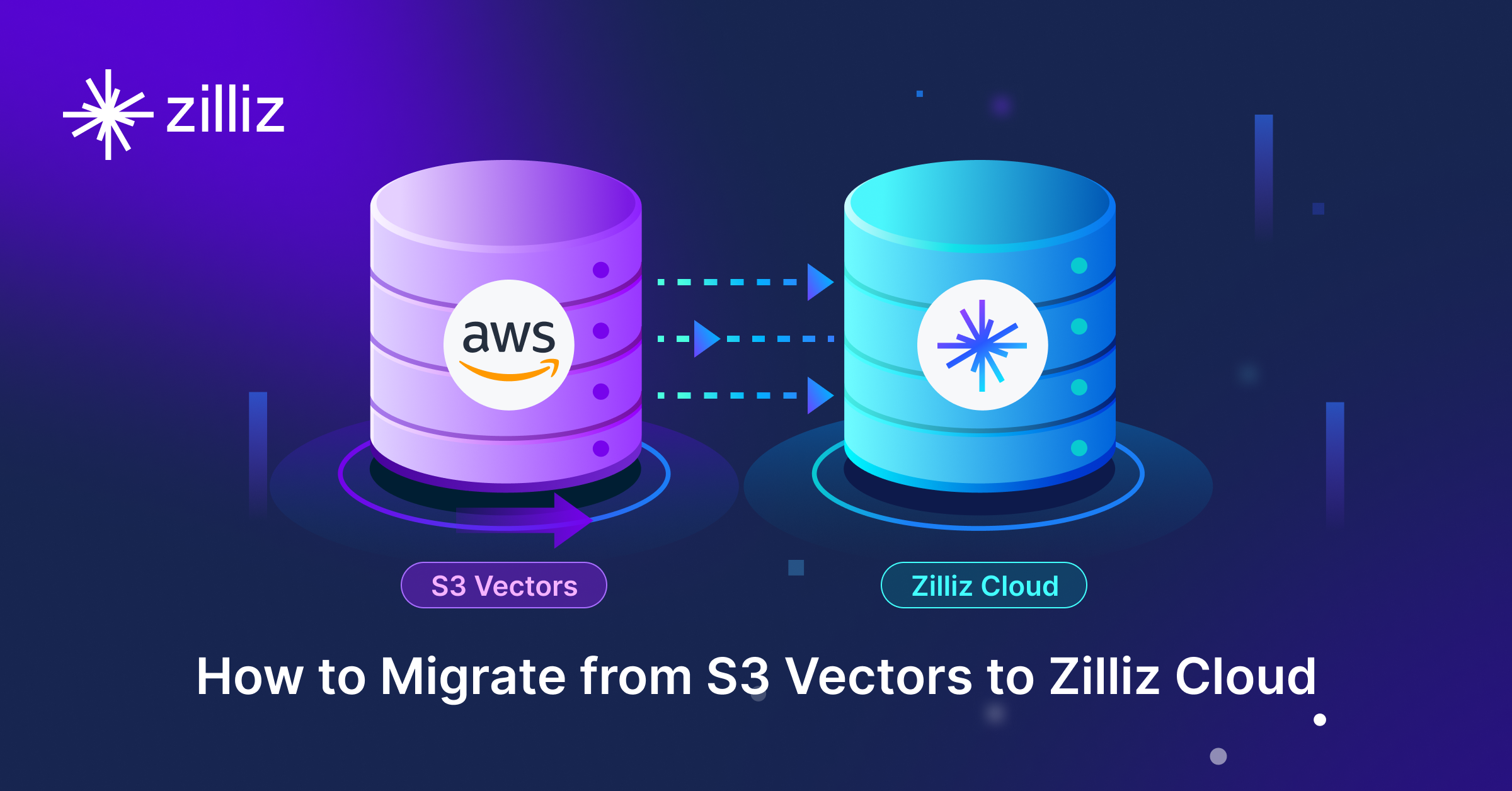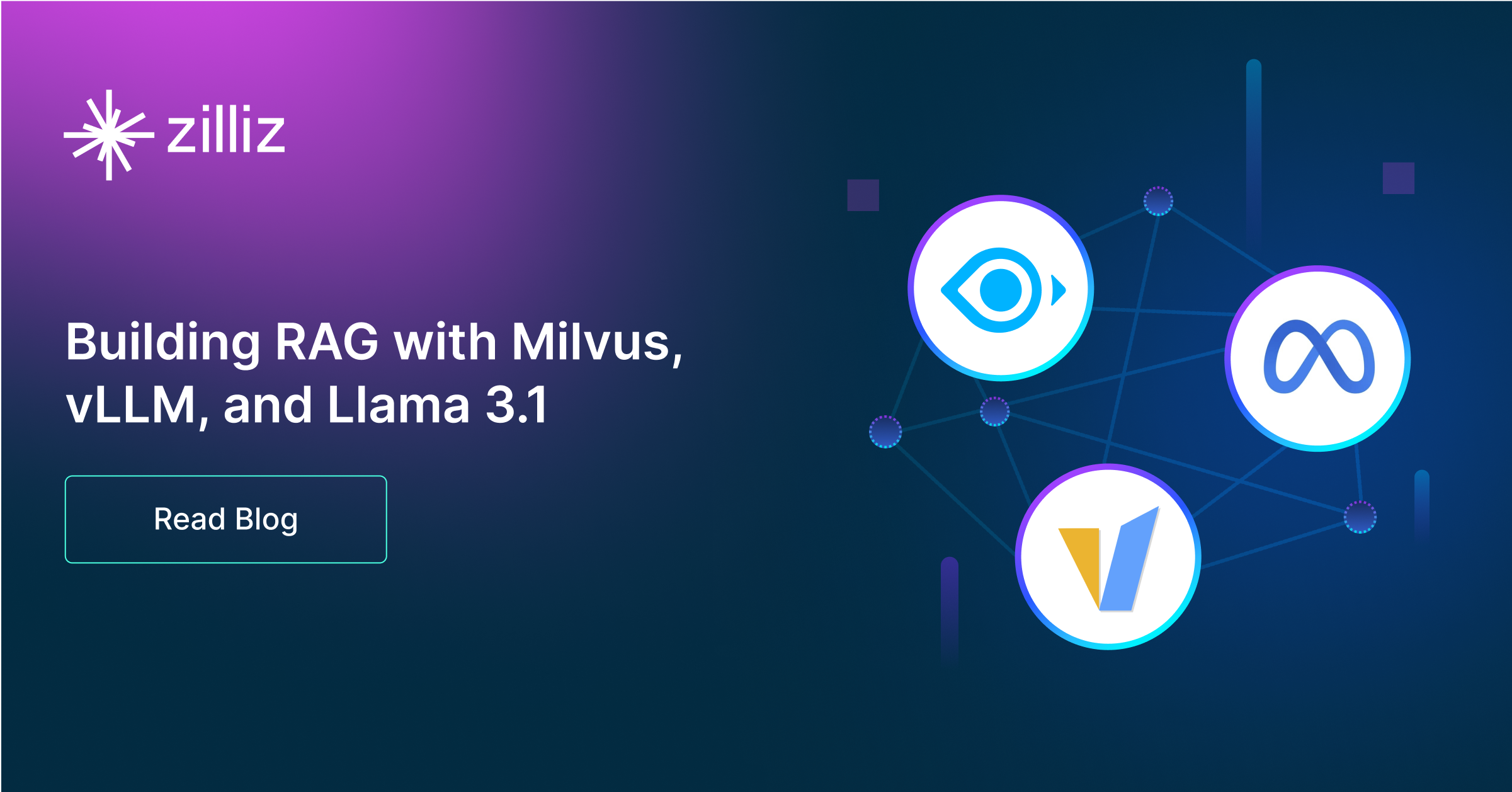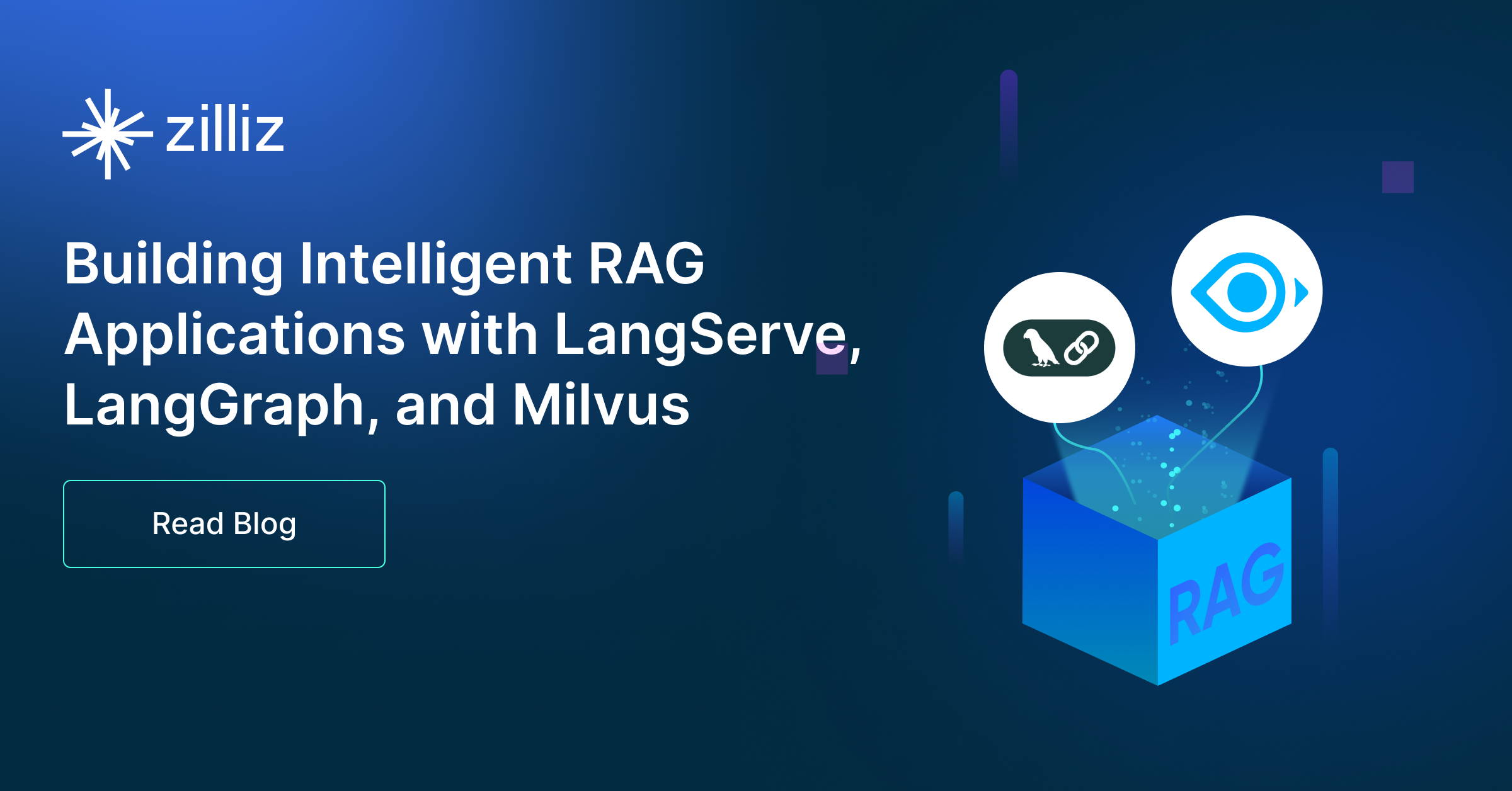Build RAG Chatbot with LangChain, OpenSearch, NVIDIA Deepseek R1, and Nomic Embed Text V2
Introduction to RAG
Retrieval-Augmented Generation (RAG) is a game-changer for GenAI applications, especially in conversational AI. It combines the power of pre-trained large language models (LLMs) like OpenAI’s GPT with external knowledge sources stored in vector databases such as Milvus and Zilliz Cloud, allowing for more accurate, contextually relevant, and up-to-date response generation. A RAG pipeline usually consists of four basic components: a vector database, an embedding model, an LLM, and a framework.
Key Components We'll Use for This RAG Chatbot
This tutorial shows you how to build a simple RAG chatbot in Python using the following components:
- LangChain: An open-source framework that helps you orchestrate the interaction between LLMs, vector stores, embedding models, etc, making it easier to integrate a RAG pipeline.
- OpenSearch: An open-source search and analytics suite derived from Elasticsearch. It offers robust full-text search and real-time analytics, with vector search available as an add-on for similarity-based queries, extending its capabilities to handle high-dimensional data. Since it is just a vector search add-on rather than a purpose-built vector database, it lacks scalability and availability and many other advanced features required by enterprise-level applications. Therefore, if you prefer a much more scalable solution or hate to manage your own infrastructure, we recommend using Zilliz Cloud, which is a fully managed vector database service built on the open-source Milvus and offers a free tier supporting up to 1 million vectors.)
- NVIDIA Deepseek R1: This advanced AI model is designed for high-fidelity image synthesis and enhancement, leveraging NVIDIA’s cutting-edge graphics technology. With its ability to generate realistic visuals and improve image quality, Deepseek R1 is ideal for applications in gaming, film production, and virtual reality, where lifelike graphics are paramount.
- Nomic Embed Text V2: An open-source, multilingual text embedding model using a Mixture-of-Experts (MoE) architecture for efficient processing. Trained on 1.6 billion text pairs, it excels in retrieval tasks, supports flexible embedding dimensions, and optimizes storage and compute costs. Its training data and code are fully open-sourced for transparency.
By the end of this tutorial, you’ll have a functional chatbot capable of answering questions based on a custom knowledge base.
Note: Since we may use proprietary models in our tutorials, make sure you have the required API key beforehand.
Step 1: Install and Set Up LangChain
%pip install --quiet --upgrade langchain-text-splitters langchain-community langgraph
Step 2: Install and Set Up NVIDIA Deepseek R1
pip install -qU "langchain-nvidia-ai-endpoints"
import getpass
import os
if not os.environ.get("NVIDIA_API_KEY"):
os.environ["NVIDIA_API_KEY"] = getpass.getpass("Enter API key for NVIDIA: ")
from langchain.chat_models import init_chat_model
llm = init_chat_model("deepseek-ai/deepseek-r1", model_provider="nvidia")
Step 3: Install and Set Up Nomic Embed Text V2
pip install -qU langchain-nomic
import getpass
import os
if not os.environ.get("NOMIC_API_KEY"):
os.environ["NOMIC_API_KEY"] = getpass.getpass("Enter API key for Nomic: ")
from langchain_nomic import NomicEmbeddings
embeddings = NomicEmbeddings(model="nomic-ai/nomic-embed-text-v2-moe")
Step 4: Install and Set Up OpenSearch
pip install --upgrade --quiet opensearch-py langchain-community
from langchain_community.vectorstores import OpenSearchVectorSearch
opensearch_vector_search = OpenSearchVectorSearch(
"http://localhost:9200",
"embeddings",
embedding_function
)
Step 5: Build a RAG Chatbot
Now that you’ve set up all components, let’s start to build a simple chatbot. We’ll use the Milvus introduction doc as a private knowledge base. You can replace it with your own dataset to customize your RAG chatbot.
import bs4
from langchain import hub
from langchain_community.document_loaders import WebBaseLoader
from langchain_core.documents import Document
from langchain_text_splitters import RecursiveCharacterTextSplitter
from langgraph.graph import START, StateGraph
from typing_extensions import List, TypedDict
# Load and chunk contents of the blog
loader = WebBaseLoader(
web_paths=("https://milvus.io/docs/overview.md",),
bs_kwargs=dict(
parse_only=bs4.SoupStrainer(
class_=("doc-style doc-post-content")
)
),
)
docs = loader.load()
text_splitter = RecursiveCharacterTextSplitter(chunk_size=1000, chunk_overlap=200)
all_splits = text_splitter.split_documents(docs)
# Index chunks
_ = vector_store.add_documents(documents=all_splits)
# Define prompt for question-answering
prompt = hub.pull("rlm/rag-prompt")
# Define state for application
class State(TypedDict):
question: str
context: List[Document]
answer: str
# Define application steps
def retrieve(state: State):
retrieved_docs = vector_store.similarity_search(state["question"])
return {"context": retrieved_docs}
def generate(state: State):
docs_content = "\n\n".join(doc.page_content for doc in state["context"])
messages = prompt.invoke({"question": state["question"], "context": docs_content})
response = llm.invoke(messages)
return {"answer": response.content}
# Compile application and test
graph_builder = StateGraph(State).add_sequence([retrieve, generate])
graph_builder.add_edge(START, "retrieve")
graph = graph_builder.compile()
Test the Chatbot
Yeah! You've built your own chatbot. Let's ask the chatbot a question.
response = graph.invoke({"question": "What data types does Milvus support?"})
print(response["answer"])
Example Output
Milvus supports various data types including sparse vectors, binary vectors, JSON, and arrays. Additionally, it handles common numerical and character types, making it versatile for different data modeling needs. This allows users to manage unstructured or multi-modal data efficiently.
Optimization Tips
As you build your RAG system, optimization is key to ensuring peak performance and efficiency. While setting up the components is an essential first step, fine-tuning each one will help you create a solution that works even better and scales seamlessly. In this section, we’ll share some practical tips for optimizing all these components, giving you the edge to build smarter, faster, and more responsive RAG applications.
LangChain optimization tips
To optimize LangChain, focus on minimizing redundant operations in your workflow by structuring your chains and agents efficiently. Use caching to avoid repeated computations, speeding up your system, and experiment with modular design to ensure that components like models or databases can be easily swapped out. This will provide both flexibility and efficiency, allowing you to quickly scale your system without unnecessary delays or complications.
OpenSearch optimization tips
To optimize OpenSearch in a Retrieval-Augmented Generation (RAG) setup, fine-tune indexing by enabling efficient mappings and reducing unnecessary stored fields. Use HNSW for vector search to speed up similarity queries while balancing recall and latency with appropriate ef_search and ef_construction values. Leverage shard and replica settings to distribute load effectively, and enable caching for frequent queries. Optimize text-based retrieval with BM25 tuning and custom analyzers for better relevance. Regularly monitor cluster health, index size, and query performance using OpenSearch Dashboards and adjust configurations accordingly.
NVIDIA Deepseek R1 optimization tips
To optimize the NVIDIA Deepseek R1 for Retrieval-Augmented Generation (RAG), ensure that your input data is well-prepared and indexed for fast access, leveraging its caching capabilities. Utilize mixed-precision training to enhance performance while reducing memory usage, and experiment with different batch sizes to find the most efficient processing speed. Additionally, regularly monitor and fine-tune hyperparameters such as learning rate and dropout rates based on validation results to avoid overfitting. Implement asynchronous data loading to keep the GPU actively processing while managing I/O operations. Finally, streamline the architecture by pruning non-essential layers and optimizing the model's inference pipeline to enhance real-time retrieval performance.
Nomic Embed Text V2 optimization tips
Nomic Embed Text V2 is a versatile embedding model suited for general-purpose text search tasks in RAG systems. Optimize efficiency by preprocessing input data to remove irrelevant noise and focus on the most meaningful content, which can help reduce computational overhead. For faster retrieval, employ approximate nearest neighbor (ANN) search algorithms like HNSW or FAISS to speed up the search process while maintaining accuracy. Consider implementing vector quantization techniques to reduce storage space without significantly affecting retrieval quality. Utilize batching to process multiple texts in parallel and minimize API latency. If working with large datasets, regularly update embeddings to reflect the most recent information, ensuring that your retrieval system remains relevant and effective.
By implementing these tips across your components, you'll be able to enhance the performance and functionality of your RAG system, ensuring it’s optimized for both speed and accuracy. Keep testing, iterating, and refining your setup to stay ahead in the ever-evolving world of AI development.
RAG Cost Calculator: A Free Tool to Calculate Your Cost in Seconds
Estimating the cost of a Retrieval-Augmented Generation (RAG) pipeline involves analyzing expenses across vector storage, compute resources, and API usage. Key cost drivers include vector database queries, embedding generation, and LLM inference.
RAG Cost Calculator is a free tool that quickly estimates the cost of building a RAG pipeline, including chunking, embedding, vector storage/search, and LLM generation. It also helps you identify cost-saving opportunities and achieve up to 10x cost reduction on vector databases with the serverless option.
 Calculate your RAG cost
Calculate your RAG cost
What Have You Learned?
By diving into this tutorial, you’ve unlocked the power of combining cutting-edge tools to build a functional and intelligent RAG system! You learned how LangChain acts as the glue, seamlessly orchestrating the flow of data between components while simplifying complex workflows like prompt templating and retrieval logic. OpenSearch stepped in as your robust vector database, storing and retrieving semantically rich embeddings generated by Nomic Embed Text V2—a model that transforms text into high-dimensional vectors, capturing nuanced meaning for accurate context matching. Then came NVIDIA Deepseek R1, the LLM powerhouse that synthesizes retrieved information into coherent, human-like responses, turning raw data into actionable insights. Together, these tools form a dynamic pipeline that bridges knowledge retrieval with generative intelligence, enabling applications like real-time Q&A, personalized recommendations, or context-aware chatbots.
But it doesn’t stop there! You also picked up pro tips for optimizing your RAG system—like tuning embedding dimensions for speed-accuracy trade-offs, refining retrieval strategies in OpenSearch, and leveraging LangChain’s modularity to experiment with different models. The free RAG cost calculator introduced in the tutorial empowers you to estimate expenses upfront, making it easier to balance performance with budget. Now that you’ve seen how these pieces fit together, imagine the possibilities: customizing this pipeline for industries like healthcare, education, or e-commerce, or even adding multimodal inputs for richer interactions. The tools are in your hands—go forth and build, iterate, and innovate! Every line of code you write brings us closer to smarter, more responsive AI systems. Let’s make magic happen! 🚀
Further Resources
🌟 In addition to this RAG tutorial, unleash your full potential with these incredible resources to level up your RAG skills.
- How to Build a Multimodal RAG | Documentation
- How to Enhance the Performance of Your RAG Pipeline
- Graph RAG with Milvus | Documentation
- How to Evaluate RAG Applications - Zilliz Learn
- Generative AI Resource Hub | Zilliz
We'd Love to Hear What You Think!
We’d love to hear your thoughts! 🌟 Leave your questions or comments below or join our vibrant Milvus Discord community to share your experiences, ask questions, or connect with thousands of AI enthusiasts. Your journey matters to us!
If you like this tutorial, show your support by giving our Milvus GitHub repo a star ⭐—it means the world to us and inspires us to keep creating! 💖
- Introduction to RAG
- Key Components We'll Use for This RAG Chatbot
- Step 1: Install and Set Up LangChain
- Step 2: Install and Set Up NVIDIA Deepseek R1
- Step 3: Install and Set Up Nomic Embed Text V2
- Step 4: Install and Set Up OpenSearch
- Step 5: Build a RAG Chatbot
- Optimization Tips
- RAG Cost Calculator: A Free Tool to Calculate Your Cost in Seconds
- What Have You Learned?
- Further Resources
- We'd Love to Hear What You Think!
Content
Vector Database at Scale
Zilliz Cloud is a fully-managed vector database built for scale, perfect for your RAG apps.
Try Zilliz Cloud for Free


